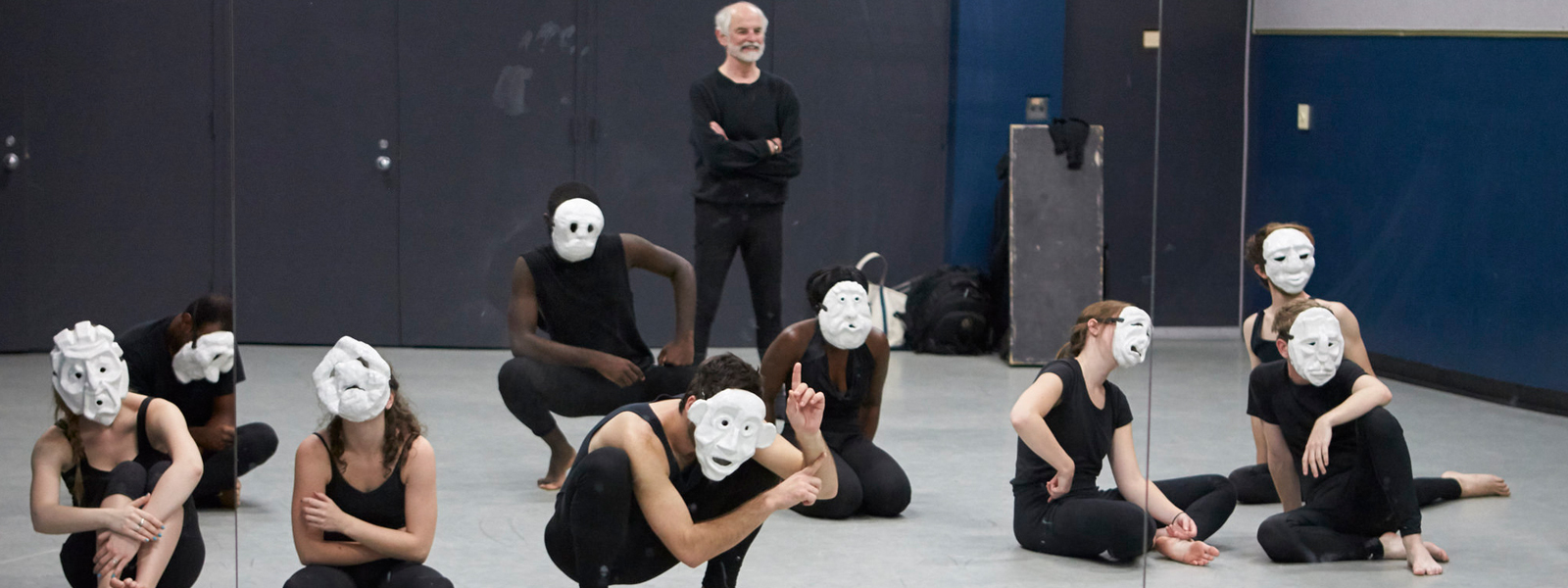Example of a Drama Artistic Statement
Example of a Drama Artistic Statement
Sean Stack is a recipient of the Kenan Excellence Scholarship, the most prestigious scholarship program at UNCSA.
Drama Artistic Statement
By Sean Stack
The commuters on my 6:57 a.m. Metrorail ride are the characters I play onstage. The scene is an odd mosaic of people scattered throughout the train car, each preoccupied with their own inner-monologue. This is where I do my character research. By treating the world as my classroom, I find truth in my acting.
Contained in this single train car is a perfectly eclectic gathering of unlike people, a microcosm of Miami life: the single mother who works overtime, the dozing homeless man who occupies three seats, the medical intern who opts to save fuel. First, I mimic their body language — neck angles, back curvatures, forehead creases. I absorb their personalities and their circumstances — how they move, how they speak, where they hold tension — anything to help me understand them better. I then collect their conflicts and contemplate their inner desires. What do they want? What are their obstacles? Below the elevated track, rush-hour traffic builds as the first rays of sunshine spill over the waking city. The conductor’s voice breaks my concentration as I catch a glimpse of my school approaching. I then part ways with my fellow commuters, if only for a moment — when acting class begins, I will recall their identities.
This has not always been my strategy. As a kid, the stage was my escape from the homophobic soccer field. Indeed, it is no surprise that my high-pitched voice and emotive facial expressions helped me to thrive onstage. I needed theater for personal validation — performance justified my atypically “big” personality. In reality, however, I had no sense of discipline. Nuances in technique were irrelevant.
High school was a painful slap in the face. I quickly understood that my passion for acting had been founded on the idea of theater, rather than on a workable craft. Teachers restructured my rudimentary concept of theater, emphasizing the catharsis of the audience — not of the actor. They stressed that my goal, as actor, was to provoke emotion in the spectator, rather than to use the stage for my personal therapy.
I understood that I could change a person’s mind — words being my only weapon. In an impersonal world, I felt obligated to use this weapon — injecting a hostile society with doses of humanity. And I wanted to be at the forefront of this battle.
But, how could I make an audience of strangers feel something, especially if I was playing an unfamiliar character? The answer could be found, in part, on my morning commute — a daily research study.
Sean Stack
But, how could I make an audience of strangers feel something, especially if I was playing an unfamiliar character? The answer could be found, in part, on my morning commute — a daily research study. Because scripts provide only a sparse outline, much of the character choices were mine to make, but what I could accomplish during two hours of rehearsal was not enough. During that finite amount of time in front of a director, I would confine my characters to the one-dimensional state they occupied in my script; I was cheating these printed personalities of their struggles and joys by relying on my first impression of a role. I was doing them a disservice by limiting my character research to the acting studio. Instead, I had to locate these people, not on Wikipedia pages or in history textbooks, but in their natural habitats: a train car, a coffee shop, or a park bench. There, I saw people stripped down to everyday life. Next to switching brains, this approach was the best way I could understand a character’s perspective. The result was truthful acting—the type that stimulated viewers and animated me.
By finding truth in my acting, the audience can empathize with my character’s struggle. If I establish a connection between my character and a viewer, the “catharsis” my teachers talked about can happen. But, it will not be mine; it will be the viewer’s — the person who relates to the single mother’s exhaustion, the medical intern’s stress, or the homeless man’s plight. By honestly portraying the often-gritty reality of the character, I encourage my audience to reflect on their lives. If they leave the theater with new insight, I have done my job. By sparking their introspection, I hope to inject the world with the communication it lacks.








